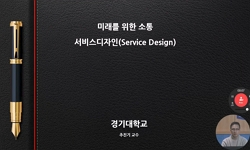Background : Governments and public organizations are emphasizing the importance of collaboration with citizens in the public sector and are trying to improve the quality of public services provided to the public through service design. As a result, p...
http://chineseinput.net/에서 pinyin(병음)방식으로 중국어를 변환할 수 있습니다.
변환된 중국어를 복사하여 사용하시면 됩니다.
- 中文 을 입력하시려면 zhongwen을 입력하시고 space를누르시면됩니다.
- 北京 을 입력하시려면 beijing을 입력하시고 space를 누르시면 됩니다.
https://www.riss.kr/link?id=A109567759
- 저자
- 발행기관
- 학술지명
- 권호사항
-
발행연도
2025
-
작성언어
Korean
-
주제어
Public Service Design ; Policy Planning ; Policy Provider ; Service Design ; Q-Methodology ; 공공서비스디자인 ; 공공서비스 ; 정책 기획 ; 정책 공급자 ; 서비스디자인 ; Q-방법론
-
KDC
658
-
등재정보
KCI등재,SCOPUS
-
자료형태
학술저널
- 발행기관 URL
-
수록면
257-282(26쪽)
- 제공처
- 소장기관
-
0
상세조회 -
0
다운로드
부가정보
다국어 초록 (Multilingual Abstract)
Background : Governments and public organizations are emphasizing the importance of collaboration with citizens in the public sector and are trying to improve the quality of public services provided to the public through service design. As a result, public service design is in steady demand to deliver customized public services. Now is the time for a review of the project planning and operation process, including the domestic public service design policy planning and operation process as well as public service design policy planning and the operation process in South Korea. In order to explore the planning and operation process of public service design projects in depth, this study examines the problems in the planning and operation process of public service design projects from the perspective of experienced service designers who have experience in project implementation.<BR/>Methods : In order to investigate the types of problems that designers perceive in the process of planning and operating public service design projects, 24 service designers and experience designers with experience in project implementation were surveyed. A Q-sample was selected based on the statements extracted from preliminary in-depth interviews, Q-classification was conducted on 24 P-samples, and the main types of problems commonly supported by the group were analyzed by Ken Q-Analysis through principal component analysis.<BR/>Results : Five types of problems perceived by designers in the process of planning and operating public service design projects were identified. The problem types were named as ‘perceived need for high public service capacity of policy providers’, ‘perceived need to select the best service for the project type’, ‘perceived need to set a clear project purpose’, ‘perceived need for flexible thinking and attitude of policy providers’, and ‘perceived need to set a budget suitable for service design characteristics’. The designers identified the causes of these problems as low public service capabilities of policy providers, inappropriate selection of service providers, unclear project objectives, passive work attitudes of policy providers, and budgeting that does not consider service design characteristics.<BR/>Conclusions : Based on the types of problems perceived by designers and the characteristics of each type, suggestions on how to improve the planning and operation of public service design projects are presented in a diagram in line with the policy planning stage. These findings can be used as a basis for improving the planning and operation of public service design projects in the future.
동일학술지(권/호) 다른 논문
-
CELLNET: Biomimetic Cell Interface Adaptable to Physical Stimuli and Environment
- 한국디자인학회
- Hoon Yoon
- 2025
- KCI등재,SCOPUS
-
The Role and Effectiveness of the Life Map Design Tool in Establishing a Care Plan
- 한국디자인학회
- Yunkyu Lee
- 2025
- KCI등재,SCOPUS
-
Crossmodal Correspondences Between Brand Name and Typeface in Brand Communication
- 한국디자인학회
- Yesel Jun
- 2025
- KCI등재,SCOPUS
-
Bridging Social Learning with Technology: The Use of a Social Robot in Preschool Development
- 한국디자인학회
- Jaehee Chung
- 2025
- KCI등재,SCOPUS






 DBpia
DBpia







